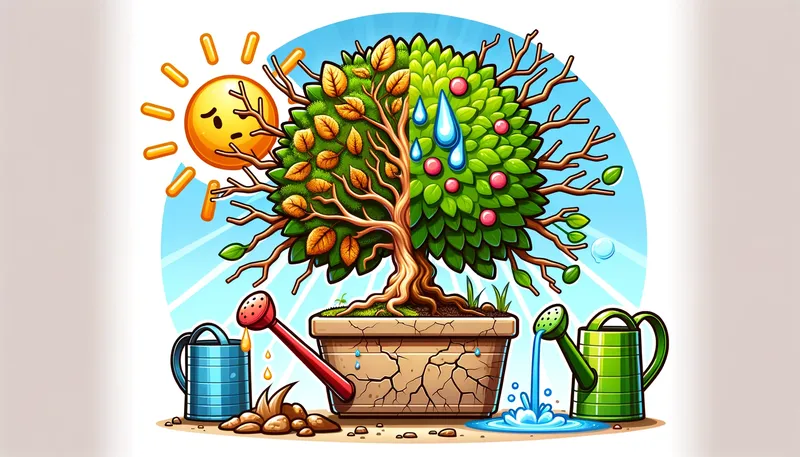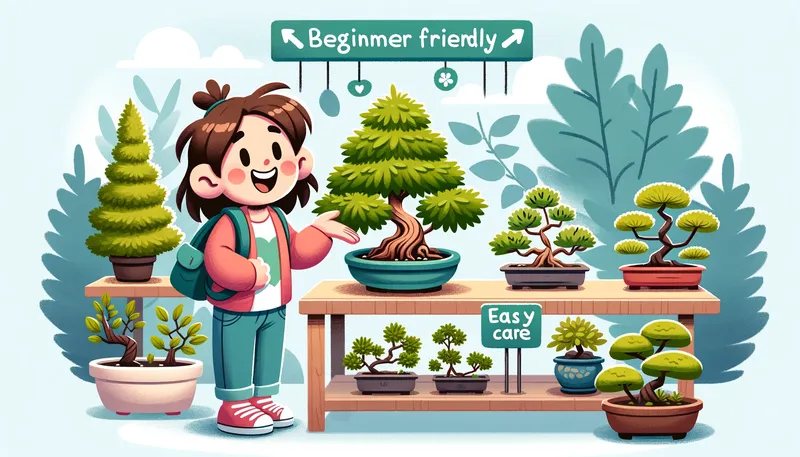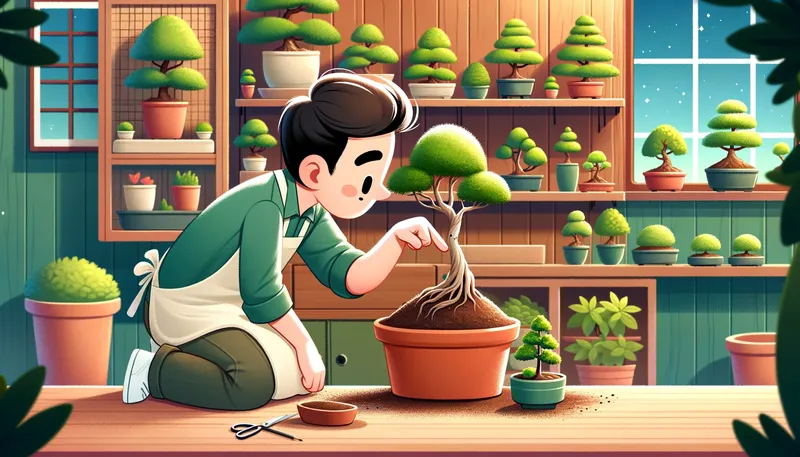Welcome to our comprehensive guide on bonsai care! Whether you are just starting out on your bonsai journey or have been practicing the art of bonsai for years, we have expert insights and valuable advice to help you along the way. In this article, we will address common bonsai questions and provide you with essential information and tips to ensure the health and vitality of your bonsai trees. From addressing concerns about bonsai cruelty to understanding the water requirements of your bonsai tree, we are here to guide you every step of the way. So, let’s dive in and explore the fascinating world of bonsai together!
Is it Normal for Old Bonsai Trees to Have Loose Pots?

It is common for old bonsai trees to have loose pots. As the tree grows, the roots can push against the pot, causing it to become slightly loose. This natural occurrence happens because the root system expands and exerts pressure on the pot over time.
However, if you notice that the pot is completely falling off when you lift the tree, it may be a sign of poor root health or improper potting. In such cases, it is essential to address the issue promptly to prevent further damage to the tree’s root system.
Proper potting is crucial for the overall health and stability of a bonsai tree. It ensures that the roots have enough space to grow and expand, while also providing stability to the tree as it matures.
How Much Water Does a Bonsai Tree Need?
When it comes to watering your bonsai tree, the amount of water it needs depends on several factors, including the species of the tree, the climate it is in, and the size of its pot.
As a general rule, you should water your bonsai tree when the topsoil feels dry to the touch. However, it’s important to avoid overwatering, as this can lead to root rot and other issues. Each bonsai tree has its own unique water requirements, so it’s crucial to observe and adjust your watering routine accordingly.
To help you maintain the ideal level of hydration for your bonsai tree, here are some guidelines:
- Check the soil: Stick your finger about an inch into the soil to check its moisture level. If it feels dry at this depth, it’s time to water your bonsai tree.
- Water thoroughly: When watering, make sure to thoroughly wet the soil until water starts to drain out of the drainage holes at the bottom of the pot. This ensures that the entire root system is adequately hydrated.
- Take note of the climate: Bonsai trees in hot and dry climates may require more frequent watering, while those in cooler and more humid environments may need less frequent watering. Pay attention to the weather conditions in your area and adjust your watering schedule accordingly.
- Observe the tree: Keep an eye on the leaves and branches of your bonsai tree. If they appear droopy or wilted, it may be a sign that your tree needs more water. On the other hand, yellowing leaves may indicate overwatering or poor drainage.
Signs of Overwatering and Underwatering in Bonsai Trees

Proper watering is essential for maintaining the health of your bonsai tree. Understanding the signs of overwatering and underwatering can help you provide the right amount of water to ensure the vitality and longevity of your bonsai.
Signs of Overwatering
- Yellowing leaves: Overwatering can cause the leaves of your bonsai tree to turn yellow. This is often a sign of root suffocation due to waterlogged soil.
- Root rot: Excess moisture can lead to root rot, characterized by a foul smell and mushy roots. If you notice root rot, it is crucial to take immediate action to save your bonsai tree.
- Fungal growth: Overwatering creates a damp environment that encourages the growth of fungi. Look out for mold or fungal growth on the soil surface or around the base of your bonsai tree.
Signs of Underwatering
- Dry, brittle leaves: When a bonsai tree is underwatered, its leaves can become dry, crispy, and easily prone to breakage. This is a clear indication that your bonsai tree needs more water.
- Drooping branches: If you notice your bonsai’s branches sagging or drooping, it could be a sign of dehydration. Proper watering will help revive the branches and restore their vigor.
Best Plants for Bonsai Beginners
When it comes to starting your bonsai journey, it’s important to choose plants that are beginner-friendly and easy to work with. Here are some of the best plants for bonsai beginners:

- Ficus: Ficus trees are a popular choice for beginners due to their versatility and resilience. They are forgiving when it comes to pruning and respond well to training, making them ideal for beginners.
- Jade Trees: Jade trees, also known as Crassula ovata, are another excellent choice for beginners. They are hardy and can tolerate a wide range of conditions, making them forgiving if you make any mistakes along the way.
- Chinese Elm: Chinese elm trees (Ulmus parvifolia) are beginner-friendly and known for their adaptability. They are suitable for both indoor and outdoor cultivation and respond well to pruning and shaping.
- Juniper Trees: Juniper trees are often recommended for beginners due to their hardiness and resilience. They are easy to care for and can tolerate a variety of growing conditions.
Addressing Concerns About Bonsai Cruelty
Many people have concerns about the potential cruelty involved in bonsai care. However, it is important to note that bonsai care is not cruel to the plant. In fact, bonsai trees receive careful attention and nurturing to ensure their health and growth. The cultivation techniques used in bonsai, such as pruning and wiring, are not detrimental to the plant’s well-being when done properly. Bonsai trees are given more focused care compared to their counterparts in the wild.
Pruning and Wiring Techniques
Pruning is a common technique used in bonsai care to shape and maintain the tree’s desired form. It involves carefully trimming the branches and foliage of the tree. This process is essential in controlling the growth and promoting a balanced aesthetic appearance. Wiring, on the other hand, is used to gently guide the branches into the desired position. It helps create the characteristic twists and turns that are a hallmark of bonsai trees.
- Pruning and wiring are both performed with the utmost care and precision to avoid causing harm to the plant.
- Proper techniques, such as using sharp and clean tools, are employed to minimize any potential damage.
- Regular monitoring and adjustment of the wired branches ensure they don’t cause any discomfort or restriction to the tree.
Focused Care and Attention
Bonsai trees require meticulous care and attention to thrive. Bonsai enthusiasts carefully monitor the health of their trees and take measures to create optimal growing conditions.
- The bonsai owner closely observes the tree, looking for signs of pests, disease, or nutrient deficiencies.
- Specific watering schedules and techniques are followed to ensure the tree receives the right amount of moisture.
- Bonsai trees are often repotted and provided with fresh soil to maintain their root health and prevent root binding.
- They are also placed in the appropriate light conditions, be it indoors or outdoors, to support healthy growth.
Proper Lighting for Indoor Bonsai Trees
Indoor bonsai trees require adequate lighting to thrive and maintain their overall health. Providing the right amount of light is essential for their growth and vitality. Here are some important considerations for lighting your indoor bonsai tree:
- Direct sunlight: Ideally, your indoor bonsai tree should receive at least 6 hours of direct sunlight per day. Placing it near a south-facing window will provide the necessary sunlight for optimal growth.
- Supplement with grow lights: If your bonsai tree doesn’t receive enough natural sunlight, especially during winter months or in shaded areas, supplementing with grow lights can be beneficial. LED grow lights are an excellent option as they provide the specific light wavelengths necessary for photosynthesis.
- Proximity to artificial light sources: While artificial lighting from lamps or ceiling fixtures can provide some light, it’s important to note that they don’t fully replace natural sunlight. If your indoor bonsai tree is placed near such light sources, ensure that it still receives adequate sunlight to thrive.
Common Issues and Troubleshooting for Bonsai Trees
Bonsai trees, like any other plant, can encounter various problems throughout their lifespan. It’s important to address these issues promptly to ensure the health and vitality of your bonsai tree. Here are some common problems you may encounter and how to troubleshoot them:
1. Overwatering:
Overwatering is a common problem that can lead to root rot and other detrimental effects on bonsai trees. Signs of overwatering include yellowing or wilting leaves and a foul odor emanating from the soil. To remedy this issue, allow the soil to dry out between waterings and adjust your watering schedule accordingly. Ensure proper drainage by using well-draining soil and holes in the pot.
2. Underwatering:
On the other hand, underwatering can cause bonsai trees to become dehydrated and exhibit symptoms such as dry, brittle leaves and drooping branches. To address this issue, thoroughly water your bonsai tree until the water drains out of the bottom of the pot. Monitor the soil moisture regularly and adjust your watering frequency to meet the tree’s needs.
3. Insufficient Sunlight:
Insufficient sunlight can hinder the growth and overall health of your bonsai tree. Symptoms of insufficient sunlight include pale or elongated leaves and weak, leggy growth. To remedy this issue, ensure that your bonsai tree is placed in a location that receives at least six hours of direct sunlight per day. If natural light is limited, consider supplementing with a grow light.
4. Over-maintenance:
Over-maintenance can also be detrimental to bonsai trees. Excessive pruning, wiring, or repotting can stress the tree and impede its growth. To avoid over-maintenance, only prune or wire your bonsai tree when necessary and follow proper techniques. Repot the tree according to its specific needs and the appropriate timeframe for its species.
Repotting Bonsai Trees: When and How to Do It

Proper repotting is crucial for maintaining the health and vitality of your bonsai tree. Repotting should be done every two years to prevent root bound conditions and ensure optimal root health. By repotting your bonsai tree, you give it the opportunity to grow and thrive.
There are several signs that indicate when your bonsai tree needs repotting. One of the most common signs is root overgrowth, where the roots start to extend beyond the drainage holes of the pot. Another sign is increased water retention, causing the soil to stay wet for longer periods. Root binding is also a clear indication that repotting is necessary, as the roots become tightly coiled around each other, inhibiting growth.
When repotting your bonsai tree, it is important to follow the proper procedures. Start by carefully removing the tree from its current pot, gently loosening the soil around the root ball. Once the tree is out of the pot, examine the roots and trim any unhealthy or excessively long roots. This process helps stimulate new root growth and maintains a healthy root system.
After trimming the roots, it’s time to repot the bonsai tree. Choose a new pot that is slightly larger than the previous one to allow for future growth. Fill the new pot with well-draining bonsai soil, ensuring that the roots are evenly spread out within the pot. Gently press the soil around the roots to secure the tree in place.
Keep Your Bonsai Plant Pet-Safe
When it comes to owning a bonsai plant and having pets, it’s essential to ensure the safety of both. While bonsai plants can bring beauty and tranquility to your home, certain species can be toxic to pets. To protect your furry friends, it’s crucial to be aware of the potential dangers and take necessary precautions.
If you have pets that may come in contact with your bonsai plant, it’s advisable to avoid certain species that can be harmful. Jade, azalea, boxwood, and sago palms are examples of bonsai plants that can pose a risk to pets if ingested. These plants may contain toxins that could cause various health issues. To prevent any mishaps, it’s best to choose pet-safe bonsai varieties that are non-toxic to animals.
Consider opting for pet-safe options like parlour palms or money trees for your bonsai collection. These plants are known to be pet-friendly and will not cause harm if your curious pets decide to explore or nibble on them. Additionally, it’s a good practice to separate your pets’ play area from the bonsai plants to avoid any accidental interactions that could lead to harm.
After this check out our other articles on:
FAQ
Is it normal for old bonsai trees to have loose pots?
It is common for old bonsai trees to have loose pots. As the tree grows, the roots can push against the pot, causing it to become slightly loose. However, if the pot is completely falling off when you lift the tree, it may be a sign of poor root health or improper potting.
How much water does a bonsai tree need?
The amount of water a bonsai tree needs depends on various factors such as species, climate, and pot size. As a general rule, bonsai trees should be watered when the topsoil feels dry to the touch. However, it is essential to avoid overwatering, as it can lead to root rot. Each bonsai tree has unique water requirements, and it is crucial to observe and adjust watering accordingly.
What are the signs of overwatering and underwatering in bonsai trees?
Overwatering can cause the roots of a bonsai tree to become waterlogged, resulting in yellowing leaves, root rot, or fungal growth. On the other hand, underwatering can lead to dry, brittle leaves and drooping branches. It is important to find a balance and provide the right amount of water to maintain the health of your bonsai tree.
What are the best plants for bonsai beginners?
Some of the best plants for beginners to start with in bonsai are ficus, jade trees, Chinese elm, and juniper trees. These plants are hardy, forgiving, and respond well to training and pruning techniques. They are more resilient and adaptable, making them suitable for beginners who are learning the art of bonsai cultivation.
Is bonsai care cruel to the plant?
Bonsai care is not cruel to the plant. In fact, bonsai trees receive careful attention and nurturing to ensure their health and growth. The cultivation techniques used in bonsai, such as pruning and wiring, are not detrimental to the plant’s well-being when done properly. Bonsai trees are given more focused care compared to their counterparts in the wild.
How much light do indoor bonsai trees need?
Indoor bonsai trees require a good amount of light to thrive. They need at least 6 hours of direct sunlight per day, preferably from a south-facing window. If the available light is not intense, supplementing with a grow light can help provide the necessary light energy for the tree’s growth. Adequate lighting is crucial for the overall health and vitality of indoor bonsai trees.
What are common issues and troubleshooting for bonsai trees?
Bonsai trees can face various issues, including overwatering, underwatering, insufficient sunlight, and over-maintenance. These issues can lead to the decline of the tree’s health. Proper diagnosis and timely action are essential to address these problems. By identifying the problem and implementing the appropriate solutions, you can revive your bonsai tree and ensure its long-term well-being.
When and how should bonsai trees be repotted?
Bonsai trees should be repotted every two years to ensure their root health and prevent root bound conditions. Signs that your bonsai tree needs repotting include root overgrowth, increased water retention, and root binding. Repotting is an essential aspect of bonsai care and involves carefully removing the tree from the pot, trimming the roots, and repotting it with fresh soil.
How can I keep my bonsai plant pet-safe?
While some bonsai plant species can be toxic to pets, there are also pet-friendly varieties available. Avoid jade, azalea, boxwood, and sago palms if you have pets that may come in contact with the plants. Consider keeping pets and plants in separate areas or choosing pet-safe bonsai varieties, such as parlour palms or money trees. Taking necessary precautions will help ensure the safety and well-being of both your bonsai and your pets.







